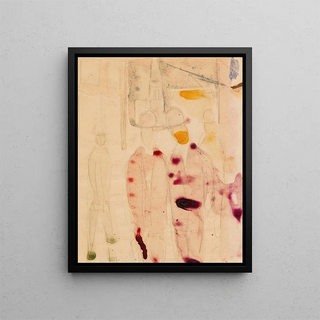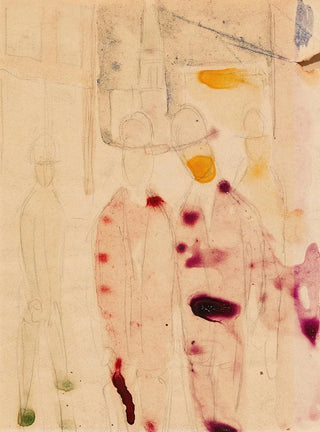Painting Rue avec des gens petits - August Macke | Art print


View from behind

Frame (optional)
In the vibrant world of modern art, the artwork "Rue avec des gens petits" by August Macke stands out for its boldness and its ability to capture the essence of urban life. This canvas, painted in 1913, evokes a lively scene where movement and color combine to create an atmosphere that is both joyful and melancholic. Macke, a prominent member of the expressionist movement, manages to transcend simple representation to offer an immersive visual experience. The art print of this piece allows appreciation of the magic of composition and the depth of emotions it evokes.
Style and uniqueness of the artwork
"Rue avec des gens petits" is an emblematic example of August Macke's unique style, characterized by his daring use of color and light. The characters, although depicted on a reduced scale, are imbued with palpable vitality, as if they were dancing in a silent ballet at the heart of the city. The vibrant shades of blue, yellow, and red intertwine harmoniously, creating an atmosphere that is both dynamic and soothing. The flowing lines and simplified forms reflect the influence of contemporary artistic movements, while revealing the artist's personal sensitivity. The art print invites the viewer to immerse themselves in a world where everyday life becomes poetic, where each figure tells a story in itself.
The artist and his influence
August Macke, born in 1887 in Meschede, is one of the major figures of German expressionism. His artistic journey, although tragically cut short by his premature death in 1914, left an indelible mark on the artistic landscape of his time. Macke surrounded himself with great names like Wassily Kandinsky and Franz Marc, contributing to the emergence of an innovative pictorial language. His exploration of colors and forms not only influenced his contemporaries but continues to inspire artists today. By incorporating elements of daily life into his works, he paved the way for a new approach to art, where subjectivity and emotion become central.

Matte finish

View from behind

Frame (optional)
In the vibrant world of modern art, the artwork "Rue avec des gens petits" by August Macke stands out for its boldness and its ability to capture the essence of urban life. This canvas, painted in 1913, evokes a lively scene where movement and color combine to create an atmosphere that is both joyful and melancholic. Macke, a prominent member of the expressionist movement, manages to transcend simple representation to offer an immersive visual experience. The art print of this piece allows appreciation of the magic of composition and the depth of emotions it evokes.
Style and uniqueness of the artwork
"Rue avec des gens petits" is an emblematic example of August Macke's unique style, characterized by his daring use of color and light. The characters, although depicted on a reduced scale, are imbued with palpable vitality, as if they were dancing in a silent ballet at the heart of the city. The vibrant shades of blue, yellow, and red intertwine harmoniously, creating an atmosphere that is both dynamic and soothing. The flowing lines and simplified forms reflect the influence of contemporary artistic movements, while revealing the artist's personal sensitivity. The art print invites the viewer to immerse themselves in a world where everyday life becomes poetic, where each figure tells a story in itself.
The artist and his influence
August Macke, born in 1887 in Meschede, is one of the major figures of German expressionism. His artistic journey, although tragically cut short by his premature death in 1914, left an indelible mark on the artistic landscape of his time. Macke surrounded himself with great names like Wassily Kandinsky and Franz Marc, contributing to the emergence of an innovative pictorial language. His exploration of colors and forms not only influenced his contemporaries but continues to inspire artists today. By incorporating elements of daily life into his works, he paved the way for a new approach to art, where subjectivity and emotion become central.
12,34 €






